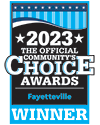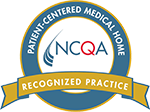A Pediatrician’s Perspective on How to Keep Your Child Safe
Today posted an article last month citing the seven things ER doctors never let their kids do. As pediatric providers, it is our responsibility to help keep children safe. So it is the perfect time to chime in on some things parents should avoid letting their kids do to help keep them safe. Here are six heavy hitters in terms of child safety.
Six Things that Risk Child Safety, According to Pediatricians
- Swim without supervision. As the days grow longer and hotter, the lakes, ocean, and pools begin to beckon our attention. Kids should learn how to swim as early as possible and, even if they are proficient swimmers, should be supervised while in the pool. Even good swimmers can drown. Accidents happen that can result in death if there is no one overseeing safety. Now is the perfect time to look into swim lessons for the kids. And if you aren’t a proficient swimmer, consider getting lessons too. Your child looks up to you and will be proud to go through lessons while you do the same.
- Go without a helmet. Whether your child is riding a bike, skiing or snowboarding in the mountains, skateboarding, horseback riding, riding a one-wheel, etc., insist that they wear a helmet. Be sure also to wear a helmet too. Accidents happen. Kids are more prone to falling and hitting their heads than adults. Help them keep their noggin safe by wearing a helmet.
- Pet unfamiliar animals. Say hi to your dog. Dog lovers love to say hi to new dogs. But not all dogs are comfortable with strangers. Dog bites are prevalent. Kids who can snuggle with their dogs and give them kisses often think every dog loves to snuggle and give kisses. Sadly, when a child approaches an unfamiliar dog and gets in their face, the risk of a dog bite increases drastically. Teach kids to ask the owner for permission first to say hi to a dog.
- Jump on trampolines. Trampolines are tons of fun and provide lots of exercise for kids. But they can also lead to severe injuries, such as lacerations and broken bones. The most common injury seen that occurs on trampolines is a break to the upper and lower arms. These typically occur when an arm is outstretched to break a fall. According to the Mayo Clinic, 20-30% of trampoline injuries need surgery. If your kids do use a trampoline, ensure:
- It has a net around it,
- Only one person uses it at a time. Especially avoid people simultaneously using the trampoline who have a mismatched weight and size,
- Kids know not to jump from the roof or other high places,
- You’ve checked your homeowner insurance, as most policies do not cover injuries that result from trampolines.
- Ride an ATV. ATVs are motorized vehicles often used off-road and can reach speeds of 65 mph. Injuries from ATV accidents are on the rise. These injuries can range from lacerations to broken bones to death. It can be difficult to control an ATV at high speed, increasing the incidence of rollovers and collisions. The American Academy of Pediatrics does not recommend ATV use for any child 16 years or younger. Wearing a helmet is critical for anyone who uses an ATV, as is wearing long pants and shirts to avoid scrapes and cuts. Never let teens drive an ATV with a passenger.
- Go to a home with firearms. This is a big one for child safety. Injuries caused by firearms have overtaken motor vehicle accidents as a cause of childhood mortality (death). Don’t be afraid to ask if any homes where your child spends time have firearms. If yes, take it further and ask where they are stored. Whether the firearms are yours or someone else’s, they should be stored in a fireproof safe.
Take the time to implement rules concerning the six safety tips provided. Hindsight is 20/20, and we don’t want you wishing you did something sooner. Take care of your family by staying as safe as possible. If you’d like to talk with your pediatric provider more about child safety or anything else, please call us at (910) 486-5437.








